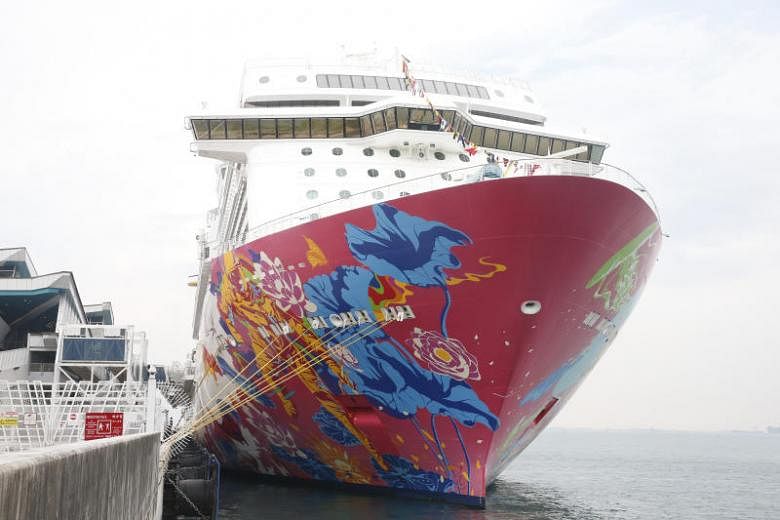SINGAPORE - The Republic's cruise industry directly contributed $706 million to the country's economy in 2016, a 36 per cent increase from 2010.
This is according to latest data from the Singapore Tourism Board (STB), and does not include the indirect spending by establishments on land that cater to cruise tourists, such as restaurants that need to buy supplies to cook food for disembarking passengers.
STB announced this on Friday (Jan 26), a day after a joint Asean Declaration on Cruise Tourism was officially endorsed at this year's Asean Tourism Forum.
The declaration will give a boost to South-east Asia's aim to transform into a vibrant cruising destination.
It also marks the first major economic plan led by Singapore since it became the Asean chairman and provides guidelines for the regional cruise industry.
These include making cruise policies and regulations clearer, and creating fairer and more responsible business practices.
The declaration's endorsement takes place almost exactly a year after plans for the declaration were announced at the Asean Tourism Forum 2017.
The growth of the cruise industry is due to several factors, said tourism expert Michael Chiam.
"More cruises have made Singapore their home port and there is a growing demand for cruise holidays in the region," said the senior tourism lecturer at Ngee Ann Polytechnic.
Referring to Marina Bay Cruise Centre (MBCC), which opened in 2012, Dr Chiam added: "MBCC also provides the infrastructure for larger cruise ships to dock, and that has enhanced our position to attract larger cruise operators to Singapore."
Industry players said that while they welcome the growth of cruise tourism in the region, large hurdles remain.
Mr Michael Goh, senior vice-president of international sales at Genting Cruise Lines, said: "One of the greatest challenges is the lack of awareness and understanding of the concept of a cruise vacation among consumers. It's important for various stakeholders and cruise lines to work collectively to innovate steps to build consumers' awareness.
"The Asian cruise industry is still very much at its infant stage with enormous potential."
Royal Caribbean Cruises' managing director, Mr Sean Treacy, noted that Royal Caribbean International welcomed its millionth guest sailing from Singapore this week, which "underscores the strong growth of the cruise market here in recent years, at around 20 per cent annually on average".
However, he added: "The industry trend is increasingly towards larger ships being deployed here to meet the growing demand for cruising. Port infrastructure in many parts of the region needs to be upgraded urgently to accommodate these larger ships, which carry 3,000 to 4,000 guests and are at least 140,000 gross tonnes. This includes building proper cruise terminals for a more welcoming tourist experience."
Specifically, Mr Treacy hopes for such infrastructure to be developed in Indonesia, Malaysia, Thailand and the Philippines.
Both Royal Caribbean and Genting Cruise Lines plan to either expand their fleet or ship itineraries in the region.
The industry hopes to see 4.5 million passengers cruising in South-east Asia by 2035, 10 times more than in 2016.
STB said that this would greatly benefit Singapore, the Asean lead coordinator for cruise development.
Mr Lionel Yeo, STB's chief executive, said: "The future of cruise tourism for both Singapore and the South-east Asian region is bright... Cruise development needs to be a concerted regional effort and Singapore will continue to actively engage with our Asean counterparts to encourage regional cruise development, and jointly promote South-east Asia as a cruising playground for the world."
The announcement was made on Friday, the last day of the Asean Tourism Forum, held this year in the Thai city of Chiang Mai.


